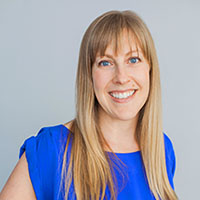
Last-Minute Open Enrollment Advice from Our Communications Consultants
“How much do employees dread making benefits decisions? As much as they hate asking for a raise, almost as much as renewing their driver’s license or passport, and maybe even more than talking about their weight.”
These are the opening lines from an HR Executive article citing new MetLife research, which surveyed more than 1,000 employees and found that confusion runs rampant as they make open enrollment decisions.
“One in five workers spends only a few minutes reviewing benefits offered by their employer before making a decision,” according to MetLife, and most people would rather take on unwelcome activities than figure out which benefits are right for them.
Here’s something else to keep in mind: Businessolver recently found that 30% of employees admit they are confused by their benefits. Unfortunately, that shouldn’t come as a surprise, since just 9% of adults understand the terms health plan premium, health plan deductible, out-of-pocket maximum, and coinsurance.
Looking solely at these numbers, the outlook may appear grim, but we know that effective communication is the antidote to many open enrollment woes. Today, we share some last-minute advice from our communications consultants, who collectively have gone through so many open enrollments, we dare not count.
5 Tips You Can’t Afford to Ignore
Less is more. OE is the time to talk about changes and enrollment, not to re-tell your entire benefits story. (Do that throughout the year!)
And repetition is remarkably necessary. Your people have a lot going on, so they're not likely to act on the first message. As the old saying goes, ‘Tell them what you're gonna tell them. Tell them. Tell them what you told them.’ And use a variety of media when doing so. If someone never reads your email, there had better be a poster, a table tent, and a company-wide voicemail, too.
Ettore Toppi, Communications Consultant
Don't bury the lead! If the coming year is a year of change, say so right up front, then explain why. If the coming year is a year of little or no change, well, then the same applies.
Andrew Kaplan, VP, Senior Communications Consultant
Always encourage active choice. Benefits are a BFD (big financial decision). Even if your plans haven't changed, people should still evaluate their options against their needs and budget.
Rita Harris, VP, Senior Communications Consultant
Benefits decisions can be complex and emotional. Wherever possible, try to factor out all of the common denominators to focus exclusively on what the primary changes are.
Be very prescriptive in telling employees who each plan is designed for. Instead of asking open-ended questions, you can use a more active voice and say, The CDHP works best for people who want A, B, C, D, and the HMO is a great plan for people who prefer X, Y, Z.’ Don't make people have to figure it out on their own.
Jon Stuckey, VP, Creative Technology & Innovation
How you present something is almost as important as what you are presenting. If the format is not interesting, chances are the employees won't engage and, therefore, won't understand or take action. Catch their attention!
Amber Riley, Communications Consultant
Creative Ways to Get Your Message Across
Here are a few ideas to get you started:
- A client with a dispersed population added a prescription benefit that required an active election. We sent first-aid kits shaped like oversized pills, emblazoned with the Rx opt-in message. You couldn’t miss it! Not only did people pay attention; they also took action.
- On behalf of a fictional employee, we wrote a first-person article for an enrollment newsletter, highlighting the value of coverage for those who feel they can't afford it.
- Earlier this year, we removed big chunks of text from an OE guide and replaced them with infographics. It was fun taking a paragraph of information and changing it into a simple, visually appealing graphic. The employee feedback was overwhelmingly positive!
- Create personas. You can use them for your planning and your communications. It's a fun way to promote how different plans work, and it's far easier for employees to engage with (even fictional) people they can identify with.
We hope this last-minute advice gives you a bit of inspiration. For even more, check out all our other enrollment resources.
And remember, just breathe.
We wish you a calm and mindful open enrollment.
Work with Us
We partner with organizations that value their people first. Let’s talk.

Jennifer Benz, SVP Communications Leader, has been on the leading edge of employee benefits for more than 20 years and is an influential voice in the employee benefits industry.
